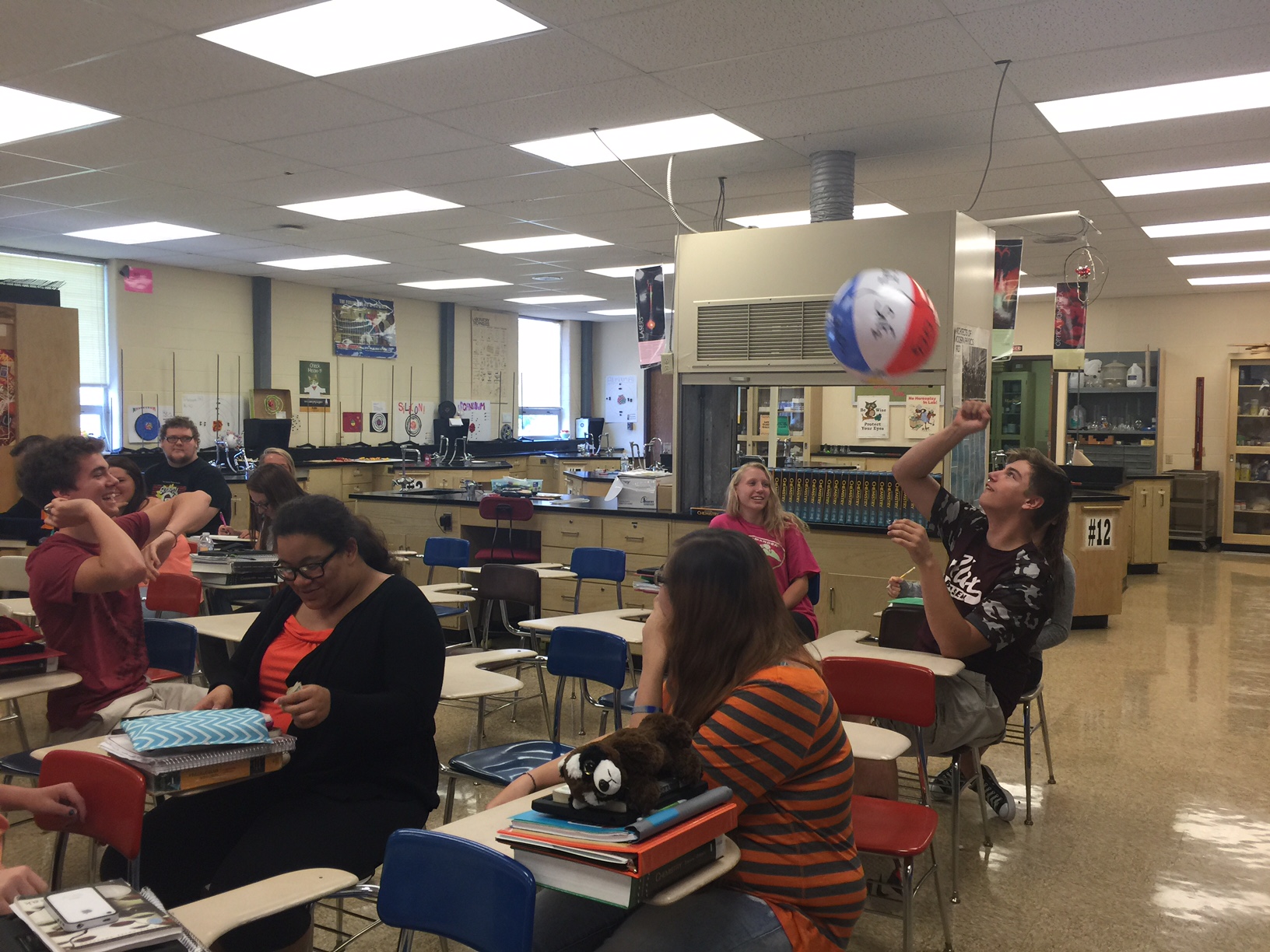What’s in a mole? 6.022 EE 23 atoms/molecules for sure, but what does a mole look like? That depends on the molar mass of a given compound. The goal of generating this particular activity was to have students calculate the molar mass of three common household compounds, sugar, baking soda and sodium chloride, and then to measure out the same number of moles of each compound and visually compare the amounts of each compound to see how much space a given amount of moles occupies.
Category Archives: InTASC 8
Kinesthetic Chemical Nomenclature Activity
 Traditional methods of practicing chemical nomenclature offer little interactivity among students. I attempted to energize this topic by physically engaging the students with beachballs labeled with chemical compound names that were categorized according to naming type, including Type I & II ionic compounds, as well as binary covalent compounds. Names of each category were written on a particular ball, which was then tossed in the classroom from student to student. Whomever caught the ball then had to properly name the compound where their left thumb landed. The activity continued until all 10 compounds on each ball were named. Student feedback was favorable in that they commented on how “fun” the activity was.
Traditional methods of practicing chemical nomenclature offer little interactivity among students. I attempted to energize this topic by physically engaging the students with beachballs labeled with chemical compound names that were categorized according to naming type, including Type I & II ionic compounds, as well as binary covalent compounds. Names of each category were written on a particular ball, which was then tossed in the classroom from student to student. Whomever caught the ball then had to properly name the compound where their left thumb landed. The activity continued until all 10 compounds on each ball were named. Student feedback was favorable in that they commented on how “fun” the activity was.
Factor Label Conversions Using Marzano Techniques
 Introducing and using conversions and the factor label system in the science classroom are traditionally done through lecture based activities. Student engagement in this topic is usually limited to checks for understanding via homework and assessment on quizzes and tests. Utilizing Marzano’s kinesthetic technique, our goal was to physically engage students in groups while simultaneously performing a formative assessment of understanding of these topics.
Introducing and using conversions and the factor label system in the science classroom are traditionally done through lecture based activities. Student engagement in this topic is usually limited to checks for understanding via homework and assessment on quizzes and tests. Utilizing Marzano’s kinesthetic technique, our goal was to physically engage students in groups while simultaneously performing a formative assessment of understanding of these topics.
Continue reading Factor Label Conversions Using Marzano Techniques
LoggerPro3 Video Analysis
We used the video analysis component of Vernier’s LoggerPro3 software to collect data from both a constant motion vehicle. The video was advanced frame by frame and data points were selected. A scale was then set using the meter stick in the image. From here LoggerPro’s spreadsheet program was used for analysis. Results included: Continue reading LoggerPro3 Video Analysis
